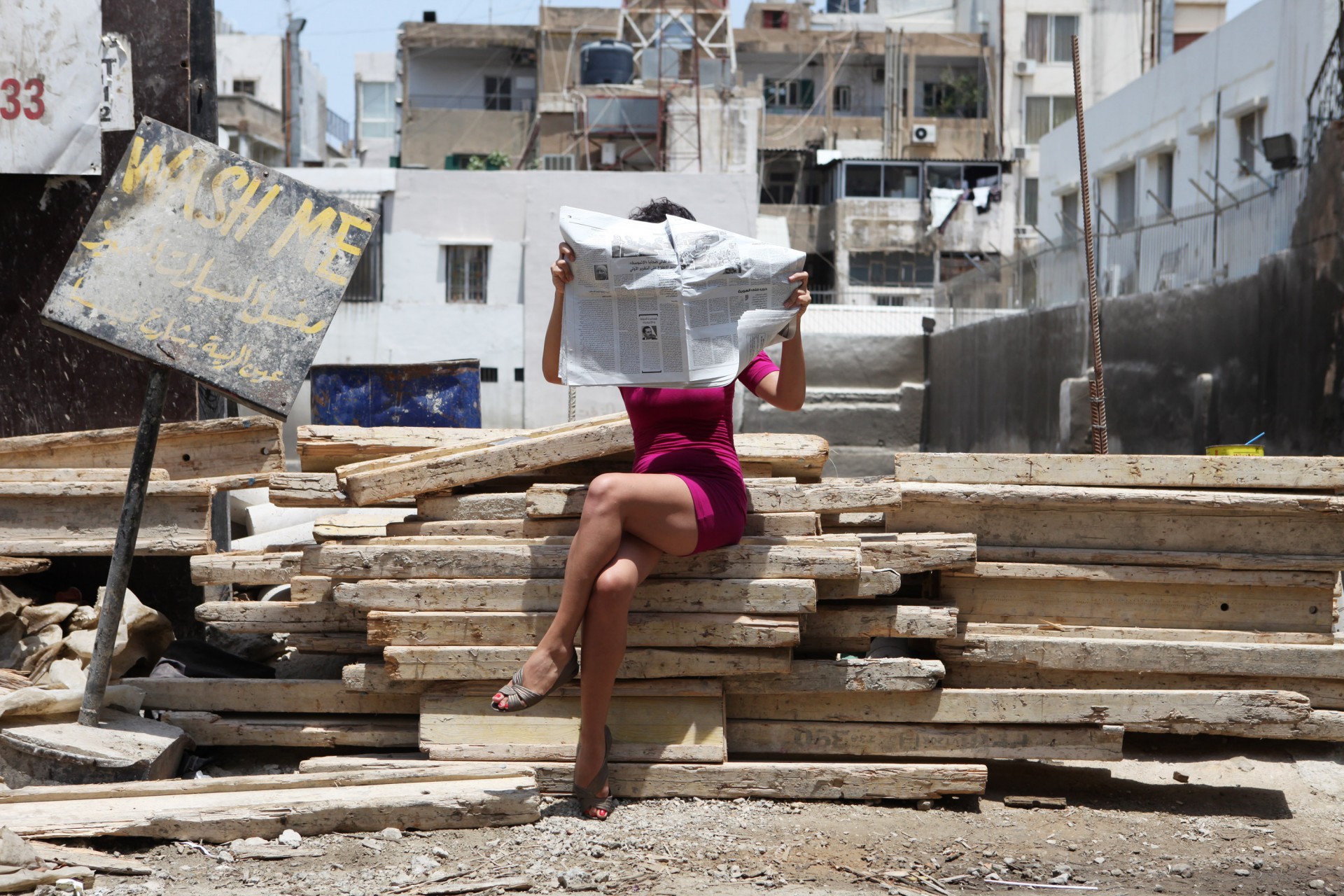For Documenting Intimacy, Tania El Khoury has produced a video which you can watch below.
Artist Statement
They tell us a good documentation of an artwork is as important as the actual artwork. Producers, programmers, advisors, friends and mothers all stress on the importance of marketing for artists. By marketing, they usually mean a good website featuring multi-media documentation of our live work. One might object by saying “But performances are ephemeral and can’t be bought by some rich rightwing art collector who casually beats his wife!” though in reality we all know that we have been touched, inspired and troubled by live art work that we think we know so well yet we’ve only experienced through photos, videos, reviews, and other forms of documentation.
Live Artists have found creative and interesting ways of documenting their work through objects, texts, diaries, blogs, photos and videos which tend to be more exciting than the theatre documentation section in national museums’ archives. We’ve come a long way since the wide shot video documentation of theatre filmed behind the audience’s heads. Live Artists have reverted to innovative ways of documentation that suit their innovative forms of live work. But artists have also found themselves faced with questions about their integrity and the ethics of documentation while dealing with interactive pieces that use the audience as active collaborator. How do we archive a live art piece that is different each time depending on who is experiencing it? How do we archive one-on-one performances? Do we tell the audience at the beginning and risk affecting their involvement in the piece or do we secretly film the piece from the wardrobe like some twisted home sex video filmed by the egocentric partner of a dysfunctional relationship?
I once left the camera running in the first one-on-one performance I ever made called Fuzzy, admittedly the audience member was an artist friend of mine and I thought I’d allow myself to film him experiencing the show. It didn’t go so well, he said the camera felt like having another person in the room. His comment marked me, I felt like I was jeopardizing my own work by putting a camera in a one-on-one performance and hence transforming it into a one-on-one-on-camera performance. As a person interested in both the political and the relational, I rejected the documentation as being dishonest to my audience and to my artistic integrity of creating an intimate one-on-one performance of which the outcome is not controlled by me. Fuzzy as my first one-on-one show taught me great deal about creating equal relationships where both the audience and the artist allow themselves to be vulnerable in front of each other and open up to challenging discussions and actions.
Needless to say that Fuzzy ended up undocumented except for a couple of photos that were taken of me without the presence of an audience. When I was asked by the Documenting Intimacy team to document a one-on-one performance, I felt excited about the possibility of attempting to document Fuzzy. I wanted to create a video because I love being a mediocre video editor. But how will I do so without footage of the actual performance?
Fuzzy was a piece about my relationship with my boyfriend at a time. The idea came after four years of being together and few big arguments later, my boyfriend suggested we see a couple therapist. I thought it was a ridiculous idea but then got excited about the endless possibilities that could happen when trying to open up to a stranger. I decided to do a performance instead in which I ask the audience to be our couple therapist. My then boyfriend thought it was a ridiculous idea and didn’t want to be in the piece but supported me while I did it alone. He wrote a letter addressed to the audience telling them what he thought the problems were in the relationship. And I did the same but live.
I recently called my ex boyfriend and asked him if he would be in a video attempting to document Fuzzy. I asked him to meet me at a pub where I’ll be filming him explaining what was Fuzzy about.
When we were talking, I realized how much of it he forgot. He joked about being traumatized by that period and hence had erased it from his memory. I insisted, “But you must remember because I have this brilliant idea that I could document the piece through your explanation of it since it’s about you but few years ago, you refused to be in it. And now you’re kind of being in it!” He said he would love to help but honestly he does not remember many details. The word “honestly” did it for me. His comment reminded me of the camera comment by my friend. I was again letting go of my work ethics because I was too excited about the end product.
No documentation of a work is worth losing what we aim at doing in the actual work, creating meaningful relationships.
Biography
Tania El Khoury is an artist working between London and Beirut. She creates interactive and challenging performances in which the audience is an active collaborator. Tania’s solo work has toured internationally, and for which she is the recipient of the Total Theatre Innovation Award and the Arches Brick Award. She is the co-founder of Dictaphone Group, a research and performance collective aiming at reclaiming public space in Lebanon.
